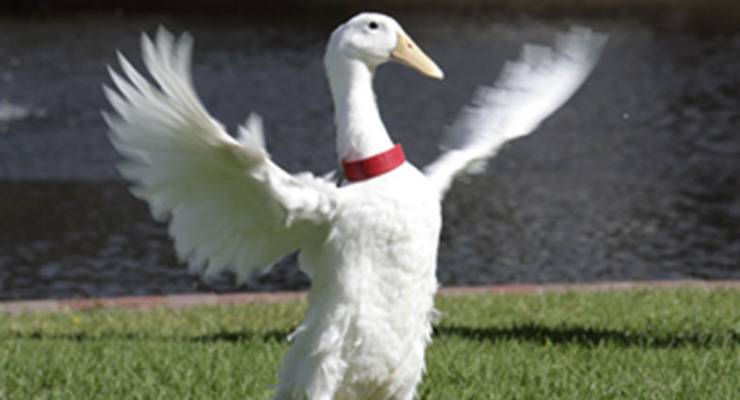
“Welcome,” says Michael Leunig, drawing aside the collection of cloud and rabbit mobiles that serves as his front door. I step into the atrium of his house, staring in wonder at the thousands of origami unicorns drifting slowly down from the ceiling. “I like to keep the unicorns here,” Leunig intones, noticing my interest. “They remind me of what’s important in life. Never forget unicorns.” He refuses to elaborate.
Sitting across from Leunig in his tastefully decorated lounge room — walls covered with giant versions of his own cartoons, carpet made of fairy floss – I notice a single tear running down his cheek. I enquire: is he all right? “I’m fine,” he replies, not wiping the tear away. “I just always cry a single tear every morning, to represent the essential sadness at the heart of mankind.”
I’m lucky to even have this time with Leunig, as usually his daily schedule is extremely full. On an average day, the legendary cartoonist gets up at 6am and spends two hours gazing wistfully at a cloud, before breakfasting on poached quails’ eggs and a champagne flute filled with absinthe. Sometimes he will also have toast — “but not in a literal sense,” he emphasises, grasping my hand tightly — before beginning the day’s work.
“I draw from nine to five every day. Most of what I draw never sees the light of day. It’s just too real for the ordinary reader to handle.” He shows me an example of one of his discarded efforts: a picture of a small boy hanging by his feet above a pit of fire while a giant mobile phone stands to the side, asking, “quinoa or veal?” In the corner of the frame, a tiny Jesus Christ stares out from inside a microwave oven. I catch my breath, stunned at the breadth of vision the cartoon displays. Are all of his rejected cartoons of a similar quality? “Some,” he nods. “Although some of them are just self-portraits of what I’d look like if I were an astronaut. That’s the kind of thing I think about.”
Of course, there is a short break in the middle of the day for lunch. “I don’t really need to eat much,” the slim, shapely cartoonist reveals, “because I gain sustenance from humanity’s innate tendency towards hope. But usually at around 12.30 I’ll sit down at the table and concentrate intensely on an imaginary bird I invented. I call it The Millennial Cuckoo, and it is the only bird that has forgotten how to believe in magic. Ten or so minutes of thinking about the Millennial Cuckoo is all I need for lunch, and then it’s back to work.”
“I’ve done all right for myself,” Leunig admits, absent-mindedly painting a falling star on my face, “but it’s not as if I ever planned it this way. I never plan anything, because after all, wars are planned, aren’t they? And wars aren’t good, are they?” I nod silently. “ARE THEY?” Leunig screams, and I hurriedly agree that no, wars are not good.
The question of what is and isn’t good has always been at the heart of Leunig’s practice: in fact, a massive mural in his rumpus room depicts two long lists: Things That Are Good and Things That Are Not Good. “I use these lists for inspiration,” Leunig says, while making a rough sketch of his next cartoon: a picture of a football team with no eyes running off a cliff into the open mouth of a crocodile shaped like an internet service provider.
But the lists do spark one troubling question: what does Leunig have to say to accusations that he is anti-vaccinations? “Not true at all,” he says vehemently. “I am very pro-vaccination. In fact I vaccinate myself every day,” he adds, holding up a large syringe. “Do you know what’s in this?” he asks. I shake my head. He leans in close and whispers into my ear. “Beauty. The syringe is full of beauty. That’s what I vaccinate myself with.”
Eventually I have to leave the Leunig compound, as the great man has already fallen behind in his work due to the generous amount of time he’s given me. As I walk out the door, he is again hard at work, holding a mason jar full of tadpoles up to the light and murmuring, “intersectionality” to himself over and over. As I walk down his long, bubble-wrap-lined driveway, a gentle snow starts to fall. It takes me a minute before I realise that it’s not snow: it’s pieces of shredded Blu-Ray player instruction manuals. I nod. It all fits.







“I just cry a single tear every morning, to represent the essential sadness at the heart of mankind.”
What more need be said? Thank you both.
Super sour.
“It’s too bad she won’t live. But then again, who does?”
Just excellent – my new fave of your works!
At last, the duck has been vaccinated with orange juice and is now ready to eat.
Beautiful work there Ben.